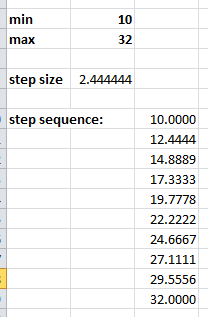Hi @Bissan, I am very sorry to hear of your daughters condition.
Changing firmware on any product is a very big deal. If you have never developed a product before, this would be very difficult to understand. But likely you have not, so I can assure you, changing software on a product for a single user is exceedingly difficult, costly, and time consuming, and takes months to check, calibrate, and verify the changes.
Therefore, we need to think this through before doing anything that could end up being a waste of time. People panic and waste huge amounts of time and energy chasing after phantoms unless they slow down and think clearly.
First: this is FACT: If it can be demonstrated that changing the firmware will definitely benefit your daughter, I will do it for you free of charge. But you will find that this is an exceedingly challenging reality to prove. More than likely, you would end up chasing your tail, following wisps of rumors of some secret or mystical frequency, clinging to baseless hopes, but ultimately accomplishing nothing. This would be harmful to your daughter, by not using the available time and resources in an intelligent and productive way.
As for myself, I am responsible to many thousands of people. I work all day, every day, every holiday, in service of humanity in general, so I can not afford to spend weeks and months chasing mirages down rabbit holes.
You would need to prove, scientifically, that you know exactly what you need, however, your description:
“My daughters disease is on a intracellular level ,and i know this device works mostly on an extra cellular level, so l want to try different frequencies”
This suggests to me that you have gotten a lot of unreliable information from some external source. Seriously though, I will help if I possibly can, so let’s think this through carefully. We begin by pointing out at least one error of fact, and one error of logic:
Error of fact: your statement “… and i know this device works mostly on an extra cellular level, …” is incorrect. We do not know that at all. Several very plausible mechanisms of action, and everything known about PEMF biophysically, clearly indicate at least some amount of intracellular electro-magnetic energy transduction.
Error of logic: Your deduction “… so l want to try different frequencies”, this conclusion does not follow from your earlier assertions, even if both were correct, when we already know that one is clearly false.
Further, I use the B5 as currently programmed using the available frequencies for a lot of my current PEMF research, and I can assure you that the frequency resolution, accuracy, and range is easily enough to more than sufficiently cover all relevant ranges of frequencies of biological importance within the scope of this specific technology. If you want higher frequencies, for example, you need something entirely different, not one of our devices.
To fully understand and appreciate this, you need to know how electronic devices are calibrated and toleranced. For example, electronic resistors are only available in a few specific resistance values, yet they cover the full range of resistances that any electronic device would ever need for any application, ever. How is this? It is because of the real tolerances of real devices. This is a rather involved engineering topic, but I can assure you, if this were not true, we would not be communicating electronically, now or ever. We would be hunting mammoths with rocks.
Finally, I would need scientific proof that different frequencies with differences of the tolerances you are requesting (1 Hz change in 300, for example) have any detectable biological effects. I am familiar with the entire, global, PEMF scientific literature, and I can assure you that no such evidence exists. Anyone who tells you otherwise is lying to you and endangering your daughter by filling your head with counter-productive mis-information.
If I am mistaken, and you have strong (or any) evidence that what you are requesting would have any possibility of having any benefit for your daughter, please let me know, and I will immediately change my opinion on the matter and render you all possible assistance beginning immediately.
However, I think no such evidence or information exists. So, rather than chasing mirages, how do we actually help your daughter?
Based on almost three decades of research, I feel confident to say that PEMF effectiveness is a result of the waveform shape, not frequency. It is also not hyper narrow and specific, but rather broadly effective biologically. These essential, effective waveform shapes are programmed into our ICES-PEMF devices. They are produced with every pulse that you get, at every “frequency”.
So, it is my scientific opinion that you would get the best benefits from using the devices as designed, as programmed, and selecting pulse patterns that have other specific, meaningful value, such as brainwave entrainment in certain bands, or sensory tolerance (something that feels right, not irritating).
This way you will have the chance to determine whether or not ICES-PEMF technology will be helpful or not for your daughter, and you can do so relatively quickly, without wasting weeks and months chasing after technical modifications that by themselves will never have any effect.




